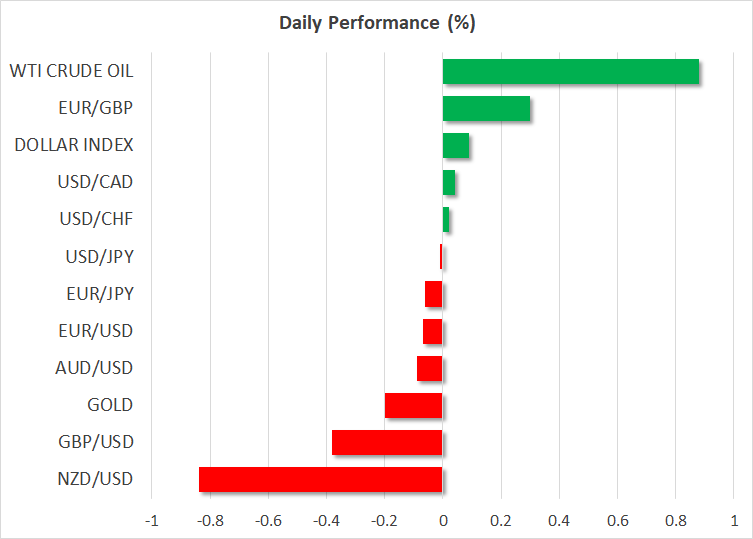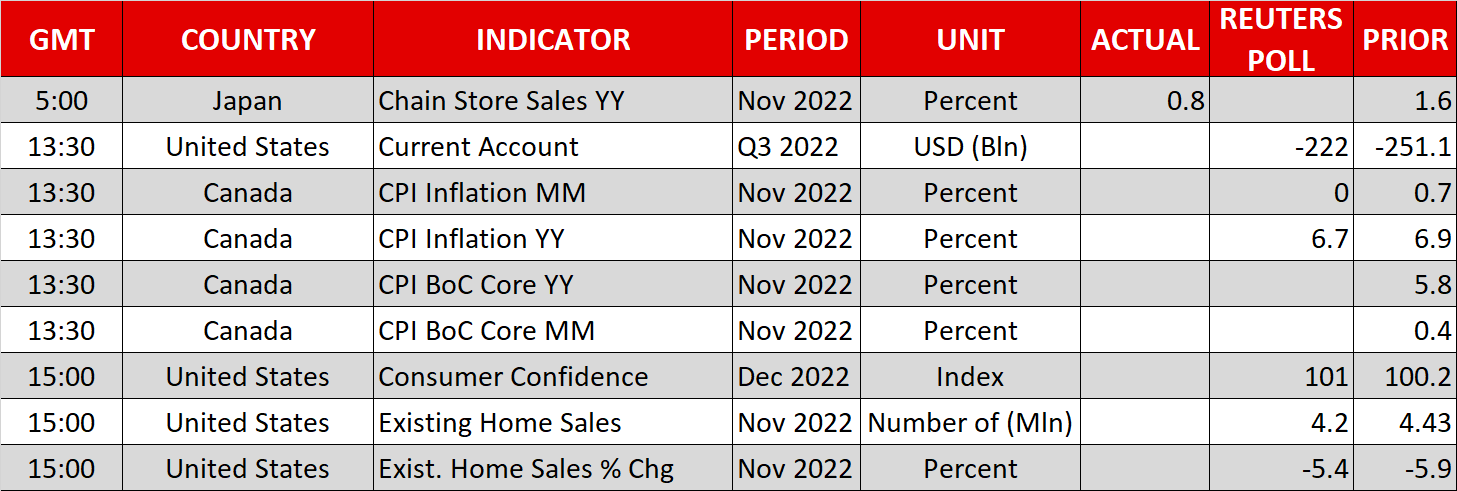- Yen rally eases but maintains bullish momentum
- JGB yields spike again, hitting BoJ’s new upper cap
- Stocks perk up as Wall Street ends losing streak

Yen has best day since 1998
The Japanese yen enjoyed its best day since 1998 on Tuesday following the Bank of Japan’s surprise move to widen the yield cap on 10-year bonds. Although the BoJ has been careful to present the shock decision as a necessary tweak to improve the functioning of the bond market, investors are drawing their own conclusion, which is that outgoing Governor Haruhiko Kuroda is laying the groundwork for an eventual exit out of stimulus.
As such, the picture has changed dramatically for the yen, which only two months ago was trading at 150 to the dollar but has since strengthened to around 131.
Further gains cannot be ruled out in the coming days as it’s possible this policy shift will spur more domestic investors to repatriate funds from overseas investments back to Japan. The timing of the decision couldn’t have been more critical for the dollar/yen pair as the US currency itself is undergoing a broad retracement of its near two-year-old uptrend amid rising concerns that the American economy will not be able to dodge a hard landing.
A large drop in November building permits was the latest indicator out of the United States yesterday to point to a weakening economy. The next test for the dollar will likely come on Friday when the latest PCE inflation data are due, which are expected to show that price pressures abated further in November. As for the yen, CPI numbers out of Japan will be eyed on Friday as inflation is slowly edging higher in the country. Later on Wednesday, Canadian inflation figures will put the spotlight on the loonie.
BoJ’s upper yield limit gets tested
But in the meantime, with liquidity dwindling ahead of the Christmas long weekend and a very light economic agenda, the bond market is in the driving seat as far as risk sentiment is concerned. Sovereign bond yields globally have been on the rise during December, pressuring interest rate sensitive assets such as stocks.
Even though most major central banks, including the Fed, slowed down the pace of their rate hikes in their last policy decisions of the year, the main takeaway was that several more rate increases are on the cards in the first few months of 2023. More significantly, there is little appetite among policymakers to pause their tightening cycles just yet even as the pain from higher borrowing costs on both businesses and consumers is worsening.
With the Bank of Japan potentially joining the rate-hike bandwagon over the next year, upside pressure is building on Japanese Government Bond (JGB) yields. The 10-year JGB yield has just touched the 0.50% upper limit, despite the Bank of Japan carrying out an unscheduled bond buying operation earlier today, and this is keeping the yen on the front foot.
Stocks turn green amid some risk appetite
However, yields elsewhere have eased off from their Asian-session highs, which although might turn out to be a temporary pullback, is nevertheless supporting the recovery attempt by equity traders.
The S&P 500 and Nasdaq Composite closed marginally higher on Tuesday, ending a four-day losing streak. But e-mini futures are gaining traction today, with European shares leading the charge.
While this rebound does not look very convincing at the moment, there may be hope yet for a mini Santa rally before the year is out, especially if there are additional triggers such as the surge in Tesla (NASDAQ:TSLA) stock in pre-market trade.
Tesla shares slumped by 8% yesterday after an analyst downgrade. Additionally, Elon Musk’s silence following the result of the Twitter poll where the public voted in favour of him stepping down as Twitter’s CEO worried investors. But Musk later confirmed that he will quit as CEO and this is likely attracting some buyers for Tesla stock today on the hope that he will be able to focus better on running the electric car maker.
